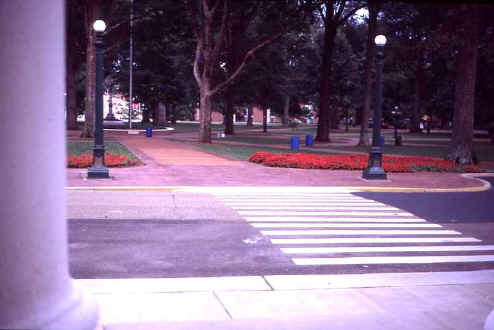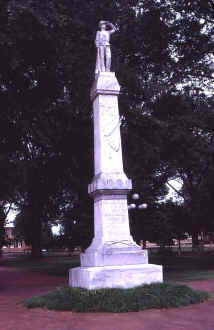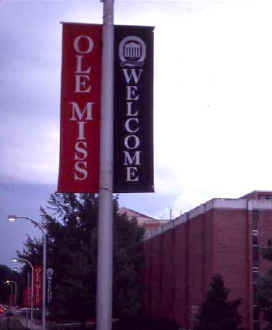
The U.S. marshals had hidden James Meredith in a different building from the Lyceum.
But the white mob in front of the Lyceum did not know that. Thinking that James Meredith was inside the Lyceum, the mob attacked the U.S. marshals on the front porch of the building. The mob hurled rocks, bricks, and bottles at the U.S. marshals.
The marshals defended themselves with tear gas.
For an entire night, a full-blown riot raged at
Ole Miss.



